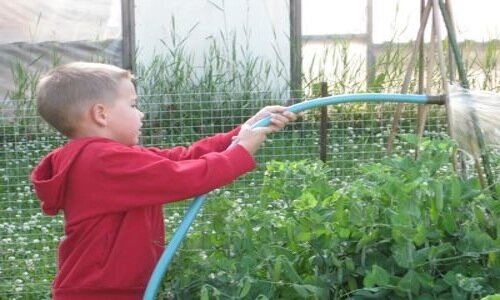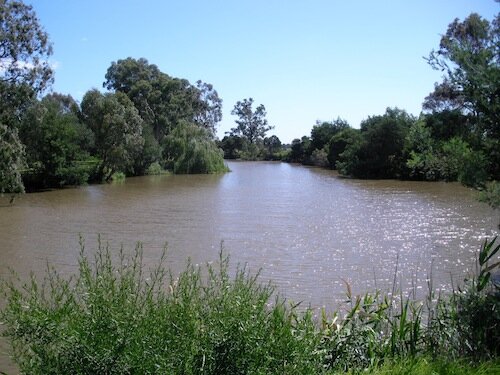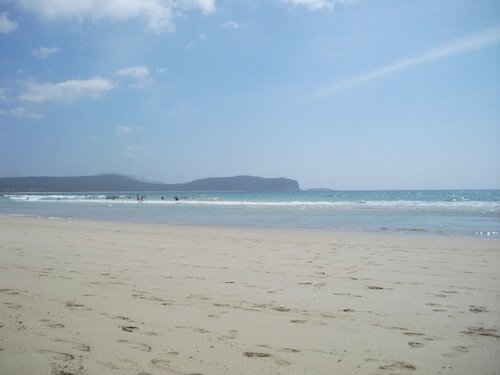Groundwater
 Groundwater - A Convenor Report
Groundwater - A Convenor Report
The bulk of this report is based on an October 9, 2010, CBC - Radio 1 "Quirks and Quarks" interview with Dr. Marc Bierkens, Chair of the Department of Physical Geography, Utrecht University.95% of the world's fresh water is stored deep in rock layers as groundwater, or aquifers. It is ancient water, replenished very slowly, if at all, by rainfall gradually seeping downs through layers of soil and rocks, often many miles away from the main body of water. For instance, the refill rate for the Ogallala aquifer, a major water source for the U.S. high plains region - from West Texas to South Dakota - and a major factor in the recent Keystone Pipeline controversy, is estimated to be 6000 years.As human populations and the demands of industry and agriculture have grown, the gap between the rate of drawdown and the rate of replenishment has increased alarmingly and depletion is becoming a very real problem. The Ogallala aquifer is estimated to be at risk of depletion within a few decades at its present rate of drawdown. Usage of the waters of Australia's Great Artesian Basin has slowed somewhat since 1915, but drawdown has dried up ancient " mound Springs", destroying their unique invertebrate populations and in some areas artesian bores have had the be converted to mechanical pumping. The worst hit areas in the world  include N.W. India and Pakistan, where water levels are dropping as much as 1 meter a year, almost faster than wells can be deepened, the southern U.S., Iran and Spain, all relatively dry areas, dependent on irrigation. The entire water ecology of these areas is under threat. With dropping water tables, streams and springs dry up. A less obvious threat is the inevitable rise of sea levels as these ancient, buried waters evaporate from the earth's surface and join the surface water cycles. 25% of the lost groundwater is entering the oceans as runoff, one way or another. Melt from glaciers and ice shelves is a minor addition in comparison. It should be noted , there are low profile tropical islands already threatened by the sea invading their beaches and usable land
include N.W. India and Pakistan, where water levels are dropping as much as 1 meter a year, almost faster than wells can be deepened, the southern U.S., Iran and Spain, all relatively dry areas, dependent on irrigation. The entire water ecology of these areas is under threat. With dropping water tables, streams and springs dry up. A less obvious threat is the inevitable rise of sea levels as these ancient, buried waters evaporate from the earth's surface and join the surface water cycles. 25% of the lost groundwater is entering the oceans as runoff, one way or another. Melt from glaciers and ice shelves is a minor addition in comparison. It should be noted , there are low profile tropical islands already threatened by the sea invading their beaches and usable land  areas.Dr. Bierkens expressed doubts that humans will ever bring themselves to stop drawing on groundwater, but strongly recommended that agriculture especially should work on improving its water use effiiency and adapting to drier growing conditions with a view to slowing depletion to a manageable rate to forestall losing the resource all together.Here in the Peace region, most communities rely on surface sources, though Fort St John has wells drilled into aquifers beneath the Peace River. But the oil and gas industry uses a lot of water for processing - mainly from surface and groundwater sources, according to an October 21, 2010 article in the North East News. A study is being done by Geoscience B.C. to develop a database of surface water, ground water under 250 m. deep and deep, saline aquifers in the region whose waters might replace surface waters currently being used. (Since this was written, the provincial government has authorized unprecedented access to the waters of the Williston Lake reservoir, hard on the heels of 2 drought years that lowered levels to the point of being inaccessible to the town of McKenzie, to the Oil and Gas Industry for gas extraction - " fracking", a method that is being linked with groundwater contamination issues.)The above report was written by Laura Lee Life, who is the Agricultural Convenor of the Baldonnel W.I.. She has lived in the North Peace since 1977, most of the time as a rural/oilpatch wife and mother on a quarter northwest of Fort St. John, B.C.BCWI has taken a strong stand on protecting our water resources. We currently have 3 resolutions before the Federal and Provincial Governments: The Site C Dam Proposal, a Ban on Deep Sea Oil/Gas Drilling on the West Coast and Water a Finite Resource.
areas.Dr. Bierkens expressed doubts that humans will ever bring themselves to stop drawing on groundwater, but strongly recommended that agriculture especially should work on improving its water use effiiency and adapting to drier growing conditions with a view to slowing depletion to a manageable rate to forestall losing the resource all together.Here in the Peace region, most communities rely on surface sources, though Fort St John has wells drilled into aquifers beneath the Peace River. But the oil and gas industry uses a lot of water for processing - mainly from surface and groundwater sources, according to an October 21, 2010 article in the North East News. A study is being done by Geoscience B.C. to develop a database of surface water, ground water under 250 m. deep and deep, saline aquifers in the region whose waters might replace surface waters currently being used. (Since this was written, the provincial government has authorized unprecedented access to the waters of the Williston Lake reservoir, hard on the heels of 2 drought years that lowered levels to the point of being inaccessible to the town of McKenzie, to the Oil and Gas Industry for gas extraction - " fracking", a method that is being linked with groundwater contamination issues.)The above report was written by Laura Lee Life, who is the Agricultural Convenor of the Baldonnel W.I.. She has lived in the North Peace since 1977, most of the time as a rural/oilpatch wife and mother on a quarter northwest of Fort St. John, B.C.BCWI has taken a strong stand on protecting our water resources. We currently have 3 resolutions before the Federal and Provincial Governments: The Site C Dam Proposal, a Ban on Deep Sea Oil/Gas Drilling on the West Coast and Water a Finite Resource.
